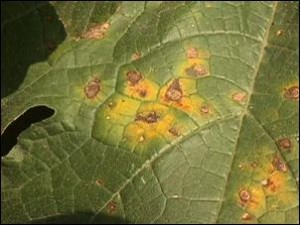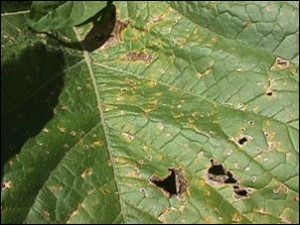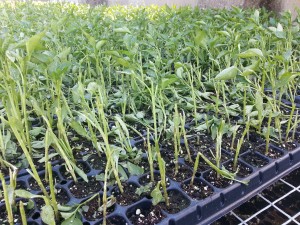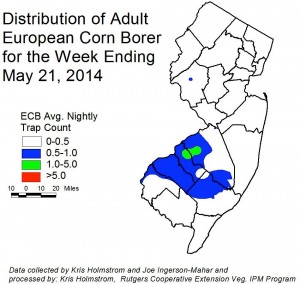Angular leaf spot is common in New Jersey and the region. It often shows up during cool, wet weather and isolated rain.

Symptoms of angular leaf spot in cucurbit.

Angular leaf spot of pumpkin. Note leaf ‘shot holes’.
Angular leaf spot will first appear as, small water-soaked lesions which will expand until they reach a larger leaf vein resulting in the angular looking symptoms on leaves. Under heavy disease pressure, the bacteria will infect fruit causing small, water-soaked circular spots. In many cases once weather conditions become dry again, infected tissue in leaves will die and fall out leaving the characteristic ‘shot hole’ symptoms. Control of angular leaf spot begins with the application of labeled rates of fixed copper plus mancozeb to help suppress the spread of the disease until hot, dry weather returns.



